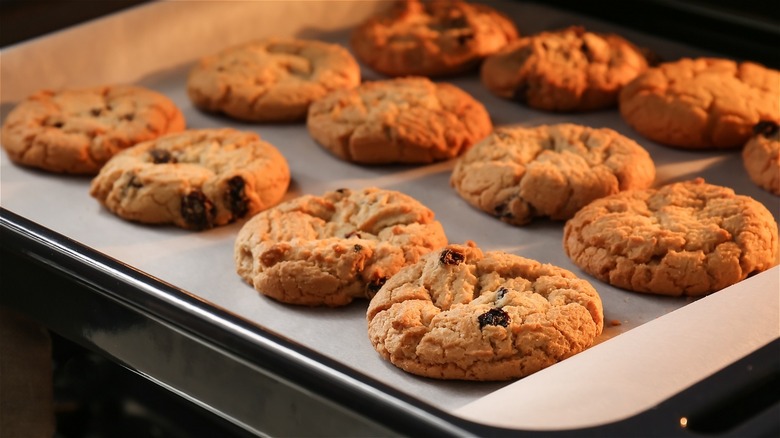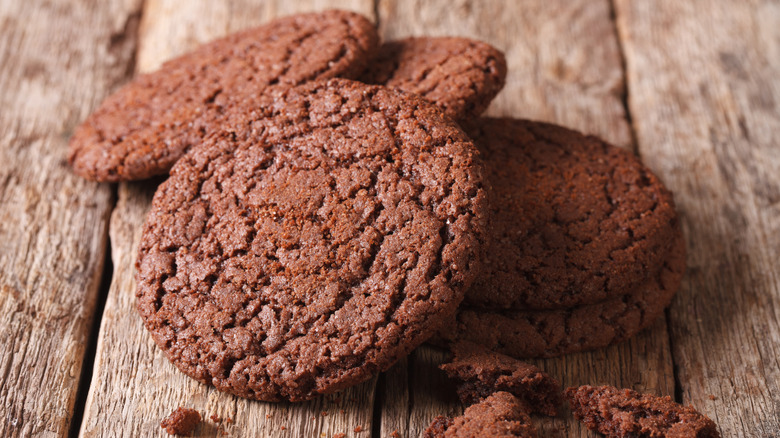The Right Amount Of This Ingredient Will Get You A Crunchier Cookie
How you like your cookies is as personal as how you like your coffee (partners take note). Some prefer a thick, cake-like cookie that's soft and chewy throughout, while others prefer crisp cookies that snap when bitten.
While there are unlimited varieties of cookies, according to The Nibble, all cookies can be broken into ten categories, drop, bar, rolled, cut-out, slice and bake (or refrigerated), fried, molded, no-bake, pressed, and sandwich. Bar cookies, like brownies and blondies, are usually soft, unlike cut-out cookies like icing-decorated Christmas cookies, sandwich cookies like jam-filled Linzer tarts, and fried cookies like Italian zeppoles, which need to be firmer to hold their shape. The remainder of the cookies, particularly drop cookies like milk's BFF chocolate chip or oatmeal raisin, can be made to suit your taste.
Baking is as much science as it is delicious art, and once you know why things happen and the chemistry of baking, recipes can be manipulated to change the outcome. Most cookies contain flour, a leavening agent (baking powder or baking soda), dairy, sugar, salt, and fat. Extracts like vanilla, chips, dried fruit, and other additions help differentiate cookies. While some ingredients are interchangeable, like substituting raisins for chocolate chips, other changes affect the outcome. The temperature of the ingredients, softened versus melted butter, for instance, and the temperature of the oven also play a critical role (per My Sweet Mission).
If your palate falls into team crunchie cookie, ensure your recipe has the right ingredients so each batch is personalized for you.
Use baking soda
Most cookie recipes begin with creaming butter and sugar until light and fluffy. Butter is a preferred fat in many recipes for its flavor. Playing with the temperature and when it's added alters the cookie, as will substituting the butter for other fats like oil. Sugar not only flavors the dough, but according to The Spruce Eats, recipes containing brown sugar will tend to be softer and chewier due to the molasses in the sugar versus cookies containing all white sugar which are thinner and crisp.
Flour provides the structure of a cookie. Of the wide variety of flour, all-purpose has a high protein content and creates a crispier cookie. To keep the cookies moist, dairy, like milk, is added. Adding sour milk, like buttermilk or sour cream, not only activates the leavener but gives the cookie some tanginess.
Baking powder and baking soda produce carbon dioxide, creating air bubbles that make the dough rise and spread when baked. Baking soda is a base and requires an acid, like buttermilk, to form carbon dioxide. Baking powder is a "complete leavener," meaning it contains baking soda and an acid, like cream of tartar, and needs a liquid to activate. If you'd like crispier cookies, look for recipes with baking soda, not powder. Baking soda allows the cookies to spread more, delaying the dough from setting earlier. Baked goods made with baking soda also brown better, which is why it is used when making pretzels and bagels, per Epicurious.

